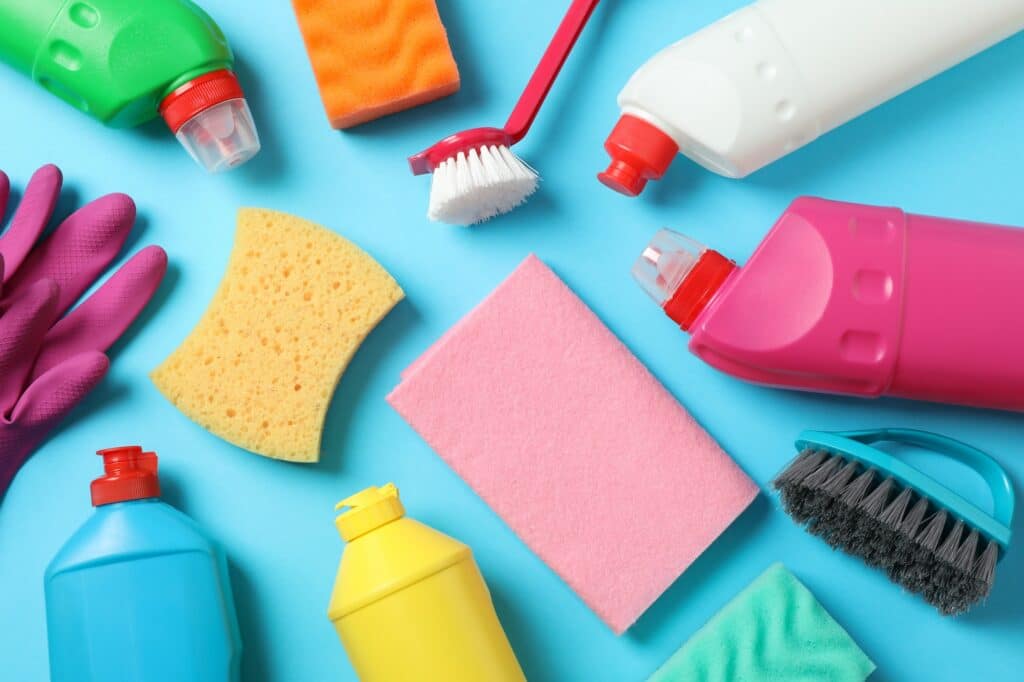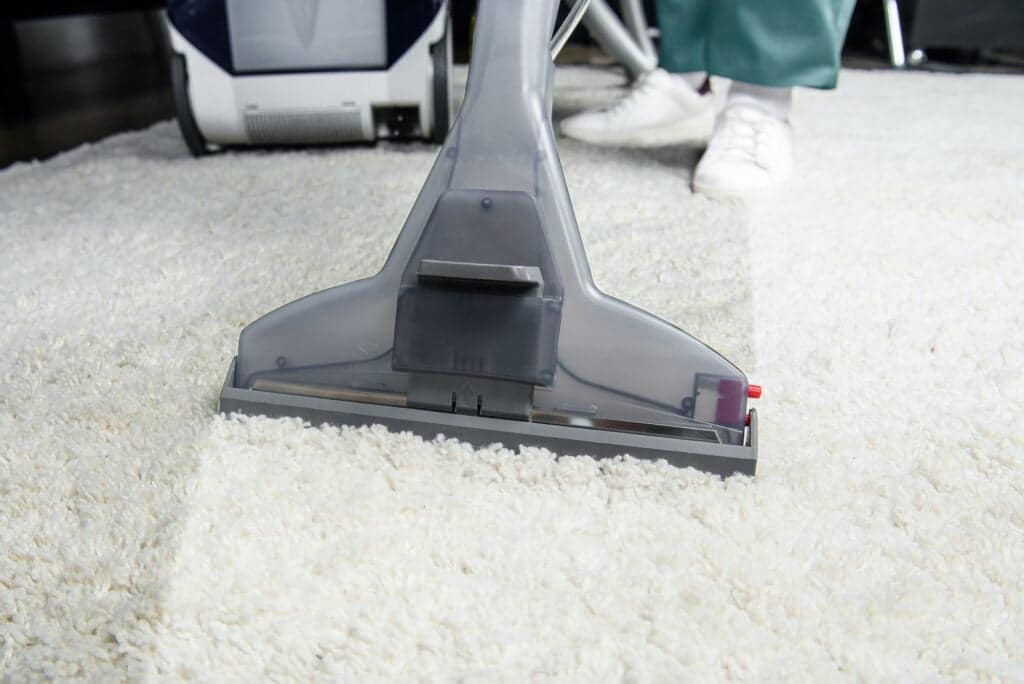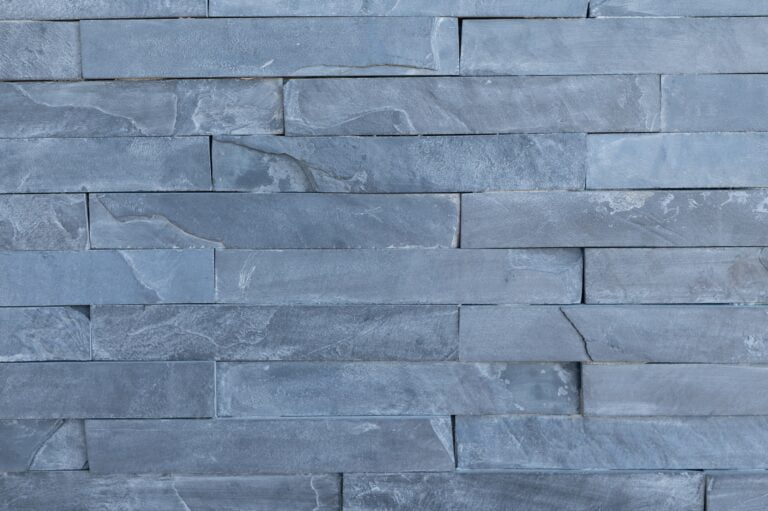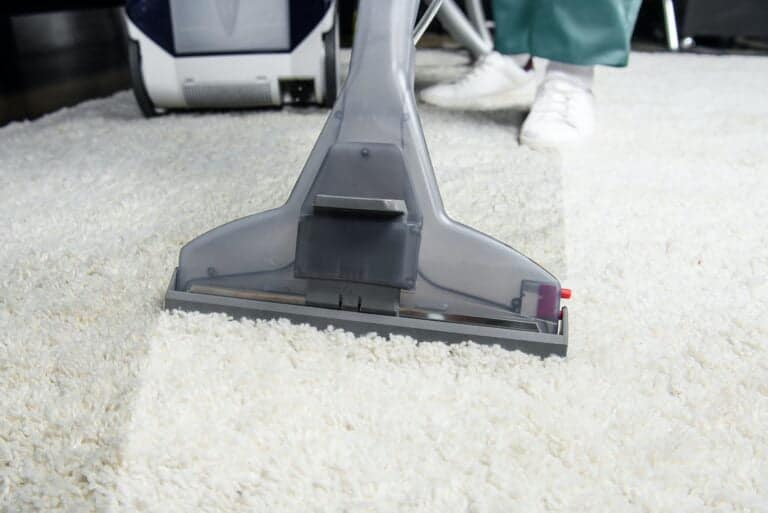“Deep cleaning is indeed next to godliness,” said John Wesley, and nowhere does this ring truer than in a medical office following an exam room cleaning checklist. With health care’s stringent cleaning duties, cleanliness is paramount. Your health care office cleaning routine plays a pivotal role in not only maintaining the aesthetics of your workplace, including exam rooms, but also in curbing the spread of diseases. This is crucial not just for doctors but for all staff. The correlation between cleanliness and patient satisfaction is undeniable. A well-kept medical environment, maintained using an exam room cleaning checklist, can significantly boost patient confidence and care. This contributes to their overall experience and enhances the curb appeal of the establishment. A deep cleaning routine is crucial for this upkeep.
But bear in mind, cleaning a healthcare setting like an exam room isn’t quite the same as regular work environment cleaning. Especially when considering services for coughing patients. Medical office cleaning, particularly in the exam room, requires an extra layer of diligence and attention to detail due to the sensitive nature of its environment. This is crucial for productivity and adds a spring appeal to the medical office.
Remember, a clean medical office is more than just about appearances—it’s about maintaining a safe space for healing. Utilizing an exam room cleaning checklist, performing deep cleaning duties, and embracing a spring cleaning mindset are all essential.
Detailed Medical Office Cleaning Checklist
Essential Items on the Checklist
A comprehensive medical office cleaning checklist for the exam room and other areas should include a range of tasks to ensure every corner of the facility remains spotless, especially during spring. It’s essential to heed this call for cleanliness. This list includes:
- Office cleaning procedures involve sanitizing high-touch areas in the exam room and spaces used by office workers, such as doorknobs, light switches, elevator buttons, and call equipment.
- Deep-cleaning restrooms including toilets, sinks, and floors.
- Thoroughly cleaning examination rooms after each patient visit.
- Office workers are dusting furniture in the spring, specifically in waiting areas, and making a call to wipe down magazines or toys.
Frequency Required for Each Task
The frequency of each task on the office cleaning checklist varies depending on its nature:
- High-touch areas: At least twice daily
- Restrooms: Every hour
- Examination rooms: After every patient visit
- Waiting areas: Once at the end of the day
However, during flu season or a pandemic, these frequencies might need to be increased.
Special Attention Areas
Examination rooms and waiting areas require special attention due to their high traffic and potential exposure to pathogens. For an exam room cleaning checklist, focus on sanitizing medical equipment like stethoscopes, otoscopes, blood pressure cuffs, etc., along with regular surfaces.
In waiting areas, pay extra attention to chairs, tables, kids’ play zones (if any), and reception counters where patients often lean or touch.
Importance of Documentation
Documentation is just as crucial as performing the tasks listed in your cleaning checklist. It’s not enough for your office cleaning procedures to be top-notch; you must also prove it! Keeping records helps track progress and identify any gaps in your routine that may need addressing. Plus, it provides evidence that you’re maintaining a safe environment for patients – which is always good news!
So there you have it – a detailed breakdown of what goes into a thorough medical office cleaning checklist. Remember: cleanliness isn’t just about looking neat; it’s about ensuring safety for everyone who walks through your door!
Maintaining Cleanliness in Medical Offices
Regular Inspection Routines
A medical office is not just any other work environment. It’s a place where health care is provided, and as such, maintaining cleanliness is of utmost importance. Regular inspection routines are crucial to keep the condition of the office up to par. Imagine walking into a doctor’s office with dusty windows or an accumulation of dirt on surfaces. Not exactly confidence-inspiring, right?
Regular inspections help control these issues before they become hazards. They include:
- Checking for any visible dirt or stains on floors, walls, and windows.
- Inspecting restrooms for cleanliness and supplies.
- Looking for signs of bacteria or flu viruses on shared equipment like phones or computers.
Training Staff on Proper Sanitation Practices
It’s one thing to have cleaning protocols in place but quite another to ensure everyone follows them diligently. That’s where training comes into play! Office workers need to be educated about proper sanitation practices.
For instance:
- Washing hands frequently with soap
- Using hand sanitizers when soap isn’t available
- Cleaning their workstations regularly
These practices might seem basic but can go a long way in preventing the spread of germs.
Use of Appropriate Cleaning Agents and Equipment
Not all cleaning agents are created equal, especially in a medical facility context. Some may kill bacteria but not necessarily flu viruses; others might be excellent at removing dirt but not so good against germs.
It’s essential that the correct cleaning agents and equipment are used for different tasks:
- Anti-bacterial wipes for desks and shared equipment
- Steam cleaners for carpets
- Disinfectant sprays for bathrooms
Systematic Approach to Maintain Cleanliness
Finally, maintaining cleanliness in a medical office isn’t something that happens by chance—it requires organization and routine!
Here’s an example:
- Daily: Wipe down surfaces, empty trash bins, clean restrooms.
- Weekly: Deep clean carpets, wash windows.
- Monthly: Inspect storage areas and dispose of outdated items.
Best Practices for Effective Cleaning
Color-Coded Systems
Ever seen a rainbow in action while deep cleaning? It’s not about the pot of gold at the end, but rather using color-coded systems. This isn’t just to make your medical office look vibrant. It’s all about avoiding cross-contamination. Each color represents a specific area or type of equipment in the office. For example, red for biohazard areas and blue for general surfaces. So, grab those colored cloths and mop heads and get to work!
Following Manufacturer’s Instructions
“Go big or go home” doesn’t apply when using disinfectants and cleaners. More doesn’t always mean better. Following manufacturer’s instructions is key here! Overuse can lead to damage on surfaces, while underuse might not effectively kill germs and viruses. Plus, who wants their medical office smelling like a swimming pool from overused bleach? Stick to the recommended amount!
High-Touch Surfaces Cleaning
Let’s play a game – think about the top three things you touch most in your medical office… Got it? Now imagine how many others are touching these same spots daily! Scary thought right? That’s why high-touch surfaces need more love (and by love we mean cleaning). Doorknobs, light switches, keyboards – they all need frequent attention to ensure they’re not becoming germ hotspots.
Waste Disposal
Last but not least, let’s talk trash – literally! Proper disposal of waste materials is crucial in any medical setting. But. Don’t just chuck it in with last night’s pizza box! Use designated bins and follow local regulations for disposal.
Here’s a quick rundown:
- Color-code your cleaning tools.
- Follow instructions on disinfectants.
- Clean high-touch surfaces frequently.
- Dispose of waste properly.
Following these best practices ensures an effective clean-up process that keeps both staff and patients safe.
Cleaning Patient Rooms and Waiting Areas
High-Traffic Areas
First up on our medical office cleaning checklist, we gotta focus on the areas that see the most footfall. Yeah, you guessed it right, waiting rooms. These spaces are like Grand Central for germs, thanks to all the sick patients coming in and out. So, it’s a no-brainer that these areas need frequent cleaning.
- Wipe down chairs and tables after each patient leaves
- Clean walkways every few hours to avoid dirt build-up
- Don’t forget those light switches; they’re germ magnets!
Patient Room Surfaces
Next stop – patient rooms. You know those bed rails, tables, and other surfaces? They’re like a playground for bacteria if not cleaned properly.
- Use disinfectants to clean bed rails after each patient
- Wipe down exam room surfaces frequently
- Regularly sanitize items that patients often touch
And remember, cleanliness is next to godliness in a medical facility!
Floor Cleaning
Alright folks, let’s talk floors now. Whether it’s carpets or tiles, they need some serious TLC (tender loving care). After all, nobody wants their patients walking on dirty floors.
- Sweep and mop hard surface floors daily
- Vacuum carpets at least once a day
- Use floor cleaners specifically designed for healthcare facilities
Yeah sure! It sounds like a lot of work but trust me when I say this: A clean floor can make your facility look more professional and inviting.
Air Quality Checks
Last but definitely not least – air quality checks! We often overlook this part of cleaning duties but remember what they say about prevention being better than cure?
- Regularly check HVAC systems for any issues
- Change filters as recommended by the manufacturer
- Consider using air purifiers in high-risk areas
Clean air isn’t just about removing dust particles; it also helps control the spread of airborne diseases. So don’t skimp on this!
So there you have it! A quick rundown of how to keep your medical facility spick-and-span. Remember folks: A clean space equals happy patients (and staff)!
Importance of Restroom Maintenance
Let’s face it, restrooms can be a breeding ground for bacteria. This makes regular and thorough sanitization crucial in any medical office cleaning checklist. Imagine an army of invisible germs lurking on every surface, ready to cause havoc at the slightest opportunity. Scary, right? That’s why a rigorous cleaning routine is non-negotiable.
- Scrubbing surfaces with effective disinfectants
- Wiping down door handles and light switches
- Cleaning toilet bowls and sinks
These are just some of the tasks that should be performed regularly to keep those pesky germs at bay.
Keep Supplies Stocked Up
Ever tried to wash your hands only to find out there’s no soap? Or reached for a paper towel and found an empty holder? It’s frustrating! Now imagine this happening in a medical office where hygiene is paramount. Regularly replenishing soap dispensers and paper towel holders is not just about convenience but also plays a vital role in maintaining cleanliness.
- Check supplies daily.
- Replenish as needed.
- Always have extra stock on hand.
Remember, prevention is better than cure!
Plumbing: An Unsung Hero
Plumbing fixtures might not be the first thing that comes to mind when you think about restroom maintenance, but they’re essential nonetheless. A leaky faucet or malfunctioning flush can lead to water wastage or even worse, flooding! Regular checks can help catch these issues before they turn into major headaches.
- Look out for signs of leaks or malfunctions.
- Fix problems promptly.
- Schedule regular maintenance checks.
Just like how our bodies need regular check-ups, so do our plumbing systems!
Trash Bins: Out of Sight, Not Out of Mind
Last but certainly not least on our medical office cleaning checklist – trash bins! They might be easy to overlook but neglect them at your own peril. Overflowing trash cans are not just unsightly; they can also lead to unpleasant odors and attract pests – yuck! Emptying them daily is a simple yet effective way of keeping your restrooms clean and fresh.
Choosing a Commercial Cleaning Company
Experience Matters
Selecting a commercial cleaning company for your medical facility isn’t a task to be taken lightly. It’s like picking the right surgeon – you want someone with experience, right? It’s essential to evaluate the company’s experience in medical facility cleaning specifically. A professional cleaning service that has been in the industry for years will have honed their skills and developed an understanding of what it takes to maintain impeccable cleanliness standards in healthcare settings.
OSHA Compliance
Secondly, don’t forget to check if they follow OSHA regulations related to healthcare facilities’ cleanliness standards. The Occupational Safety and Health Administration (OSHA) sets guidelines for maintaining safe and healthy working conditions. So, if your potential cleaning service can’t tick this box, it’s time to look elsewhere.
Always On-Call
What happens when there’s an unexpected spill or accident? Does your chosen cleaning company ride in like a superhero or are they MIA? Assessing their availability during emergencies is crucial. You need a team that’s ready 24/7 because let’s face it; emergencies aren’t known for keeping regular hours.
EPA-Approved Disinfectants
Lastly, verify their use of EPA-approved disinfectants. Using just any old cleaner won’t cut it when you’re dealing with harmful bacteria and viruses. Ensure your professional cleaning service uses products approved by the Environmental Protection Agency (EPA). This ensures maximum effectiveness against pathogens while also being safe for patients and employees alike.
Now, how do you put all these together?
- Request a free quote from several commercial cleaning companies.
- Ask about their experience in the medical facility cleaning sector.
- Confirm their compliance with OSHA regulations.
- Inquire about their emergency response times.
- Verify if they use EPA-approved disinfectants.
These steps will help you choose a reliable and efficient commercial cleaning company that fits your needs perfectly! Remember, clean isn’t just about looking good; it’s about safety too!
Wrapping it Up
No doubt about it, cleanliness in a medical office is a big deal. It’s not just about making the place look spick and span – you’re also keeping germs at bay and ensuring everyone’s safety. So, whether you’re cleaning patient rooms or maintaining restrooms, remember that every nook counts.
Choosing a commercial cleaning company can be a game-changer for your medical office. They’ve got the know-how to keep your space squeaky clean and germ-free. So why not give it a shot? You’ll be amazed at how much stress you can save by leaving the dirty work to the pros!
FAQs
What should be included in a medical office cleaning checklist?
A comprehensive medical office cleaning checklist should include tasks such as dusting, vacuuming, mopping, sanitizing surfaces, emptying trash bins, and maintaining clean restrooms.
How often should a medical office be cleaned?
Medical offices should ideally be cleaned daily due to the high volume of patients and potential exposure to germs and bacteria.
Why is cleanliness important in a medical office?
Cleanliness in a medical office is crucial for preventing the spread of diseases and infections. It also creates a comfortable environment for both patients and staff.
What are some best practices for effective cleaning in a medical office?
Some best practices include using disinfectants approved by health authorities, wearing appropriate protective gear while cleaning, and following all recommended guidelines for waste disposal.
How do I choose the right commercial cleaning company for my medical office?
Look for companies with experience in healthcare facilities, check their references, ask about their training procedures and ensure they follow strict standards of cleanliness.

















